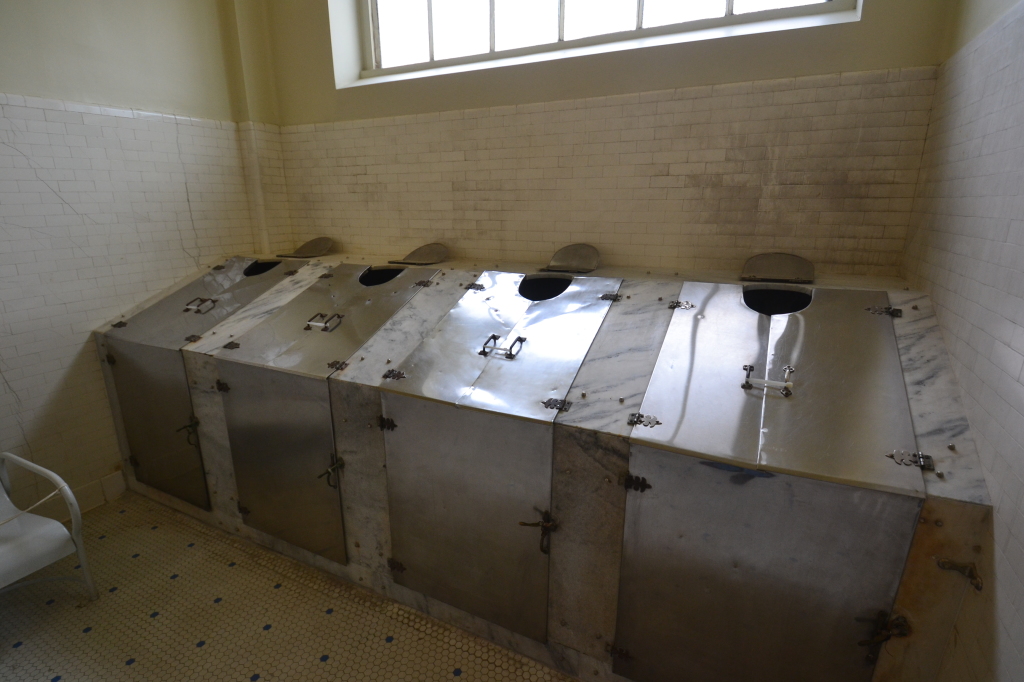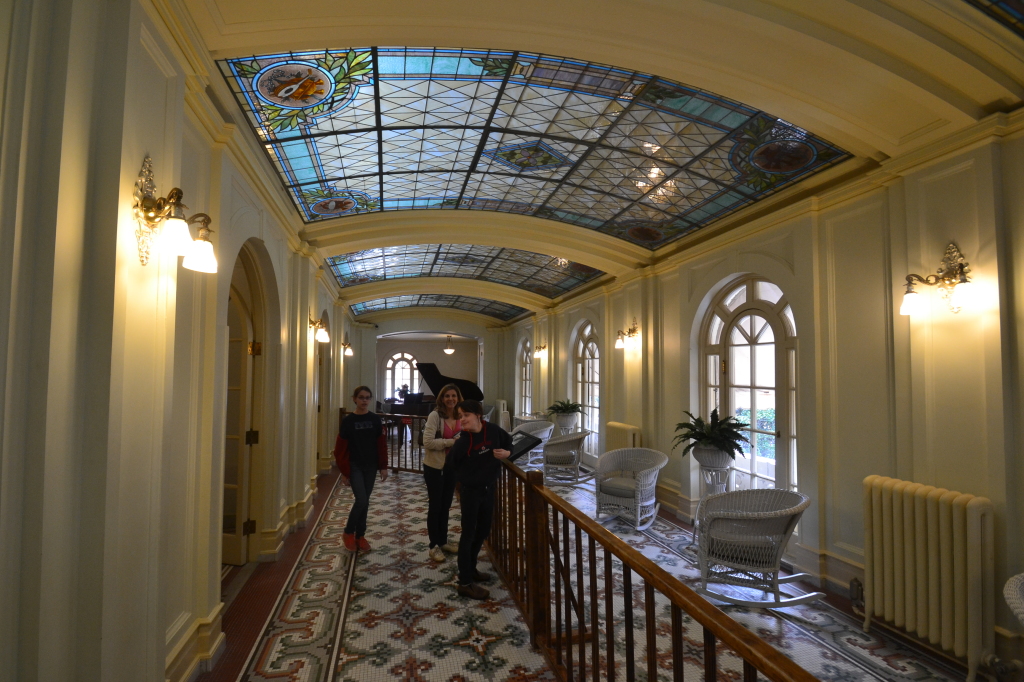My husband thought I was nuts – completely nuts. We were visiting my hometown of Shreveport, La. when I said, “Instead of going straight back to Atlanta, we could go up through Arkansas, over to Tennessee, spend the night in Memphis and then get back to Atlanta tomorrow night.” Within a few hours, we found ourselves in Hot Springs where I had vacationed as a child.
Things had changed since those trips in the 1970’s. Well, not everything had changed, especially not the Arlington Hotel. This historic hotel has looked the same since 1924 and will continue to do so until a natural disaster comes along. I fondly recall walking with my parents across the street from the Arlington into the Hot Springs National Park at dusk. It was the first time I had ever seen fireflies, which we called lightning bugs.
But what had changed – and for the better – was Bathhouse Row. Back in the 1970’s, these large house-like structures seemed abandoned and decrepit. Now, this was a vibrant area and most of the bathhouses had been restored on the outside to their original splendor during the earlier part of the 1900’s.
One bathhouse – the Superior – has been converted into a craft brew pub, two others – the Quapaw and the Buckstaff are fully operational bathhouses. But the most opulent is the Fordyce Bathhouse which was constructed in 1915 at a cost of over $200,000. Renovated and reopened as a museum in 1989, it also serves as the Hot Springs National Park visitor’s center.
Bubbling water from two terra cotta fountains greeted us as we entered the marble lobby. The original Otis elevator that transported guests throughout the Renaissance Revival building was located around the corner from the attendant’s desk. We toured both the men’s and women’s (considerably smaller) bathing sections. The women’s bath hall resembled a large locker room filled with stalls each housing a porcelain bathtub and chair. We passed through the pack room and the cooling room. At times, the rooms seemed cold and sterile and even a bit spooky – especially as we saw an old electrotherapy machine that looked like it came from a James Bond movie. Because it is no longer functioning as a bathhouse, we had to envision people travelling from far and wide to find relief for many different ailments including arthritis, liver disease and headaches.

No expense was spared when Samuel Fordyce built the 28,000 square foot facility to attract visitors from all over the country. This was most evident in the men’s atrium. This space houses a DeSoto fountain flanked by marble columns and benches while light shines from above through the aquatic themed stained-glass window.
Taking the grand marble staircase, we approached the second floor which had dressing rooms, the men’s massage rooms, exhibits from the bathhouse days and an outdoor courtyard for sunbathing that was segregated between the sexes. A short film detailing the history of the springs, the bathhouses and the creation of the Hot Springs National Park was presented on every half hour.
But the bathhouse wasn’t just a place to bathe. It was a respite from the outside world with a solarium, private state rooms, a music room for the ladies and a billiard room for the men, all of which are on the third floor. Additionally, there was a large wood-paneled gymnasium with athletic rings and pummel horse. At one time, the Fordyce even had a bowling alley in the basement. Today, visitors can see the Fordyce spring and some of the mechanical and pumping equipment in the basement.
All good things must come to an end. Most bathhouses experienced declines after World War II due to the discovery of penicillin and strides in modern medicine. In 1962, the Fordyce closed its doors, followed by the Quapaw in 1968. By 1986, only the Buckstaff was still functioning as a bathhouse.
Fortunately, the National Park Service designated Bathhouse Row as a National Landmark in 1987 for everyone to enjoy. For more information visit the website at http://www.nps.gov/hosp/index.htm.


